Patellofemoral Pain Syndrome Exercises
Medically reviewed by Drugs.com. Last updated on Apr 6, 2025.
What do I need to know about patellofemoral pain syndrome (PFPS) exercises?
Your healthcare provider will tell you when to start doing PFPS exercises. Your provider or a physical therapist will teach you exercises to strengthen the muscles in your legs, including around your knee. Strong leg muscles can help prevent more injuries.
What do I need to know about exercise safety?
- Only do exercises as instructed. Your healthcare provider or physical therapist will tell you which exercises to do and how many times to do them.
- Stop if you feel pain. You may feel some discomfort when you start, but you should not feel pain. Discomfort should get better as you continue the exercises. If you feel pain during an exercise, stop and call your physical therapist or healthcare provider right away.
How do I perform PFPS exercises safely?
Your healthcare provider or physical therapist will tell you which of the following exercises to do, and how often to do them.
- Wall lean: Stand with your side against the wall. Bend and raise the leg closest to the wall. Press your knee into the wall. Hold the position as long as directed. Repeat on the other side.
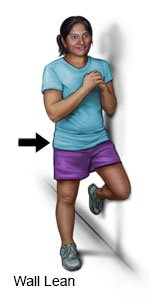
- Quad set exercise: Lie on a flat, firm surface. Bend your left leg until your foot is flat on the floor. Keep your right leg straight. Tighten the top of your right thigh and hold for 10 to 20 seconds, and then relax. Repeat this exercise 5 to 10 times. Then repeat on your other leg.
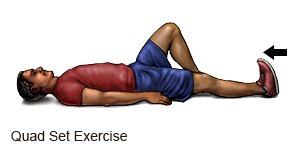
- Short arc quad (SAQ) exercise: Lie on a flat, firm surface. Place a rolled up towel or foam roller under your injured knee. Bend your knee. Tighten your quad muscle and lift your foot as you straighten your leg. Hold for 5 seconds and then return to the starting position. Keep your knee touching the towel or roller at all times.
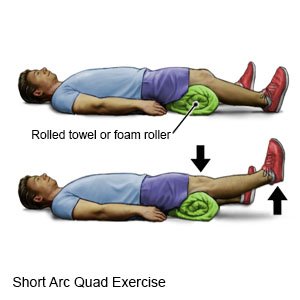
- Straight leg lift: Lie on a flat, firm surface. Bend your left leg until your foot is flat on the floor. Raise your right leg several inches off the floor and hold for 5 to 10 seconds. Lower your leg slowly. Repeat this exercise 5 to 10 times. Then repeat on your other leg.
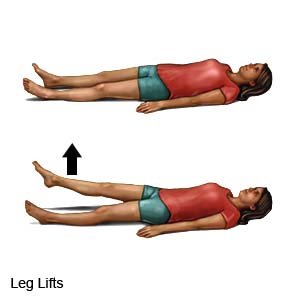
- Clam exercise: Lie on your side so your injured side is on top. Bend your knees. Keep your heels together during this exercise. Slowly raise your top knee toward the ceiling. Then lower your leg so your knees are together.
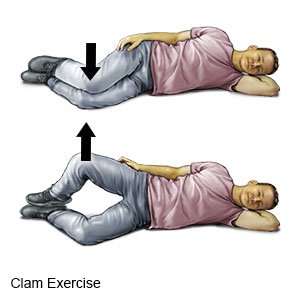
- Single leg stance: Your goal is to put weight on your injured leg. First stand with your weight evenly on both feet. You may hold on to a chair or wall for balance. Do not lean to the side. Then lift your foot so all your weight is on your injured leg. Ask your healthcare provider how long to hold this position.
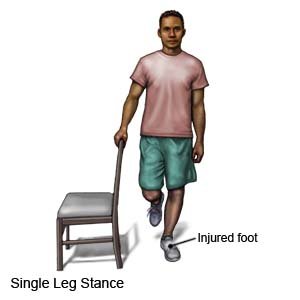
- Single leg squat: Stand on one leg. Raise the other leg straight out with toes pointed up. Bend the standing leg into a squat and slowly come back to a standing position.
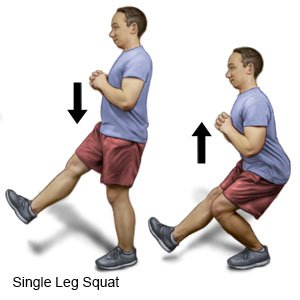
- Ball bridge: Lie on your back with legs straight and ankles on the ball. Keep your legs straight. Slowly raise your hips off the floor by making your buttock muscles tight. Hold for 5 seconds. Repeat as directed.
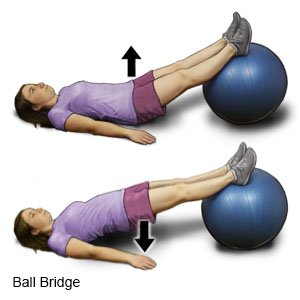
- Ball bridge with knee flexion: Lie on your back. Bend your knees and put your feet on the ball. Lift your hips off the floor by making your buttocks muscles tight. Make sure to keep your feet on the ball and knees bent.
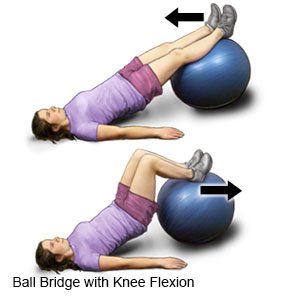
- Standing hip abduction with band: Stand with legs hip width apart with a band around your ankles. Lift your leg out to the side and stretch the band. Bring your leg back down. Repeat on the other side.
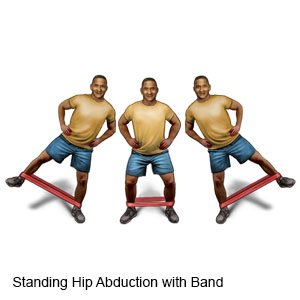
Care Agreement
You have the right to help plan your care. Learn about your health condition and how it may be treated. Discuss treatment options with your healthcare providers to decide what care you want to receive. You always have the right to refuse treatment. The above information is an educational aid only. It is not intended as medical advice for individual conditions or treatments. Talk to your doctor, nurse or pharmacist before following any medical regimen to see if it is safe and effective for you.© Copyright Merative 2025 Information is for End User's use only and may not be sold, redistributed or otherwise used for commercial purposes.
Further information
Always consult your healthcare provider to ensure the information displayed on this page applies to your personal circumstances.
